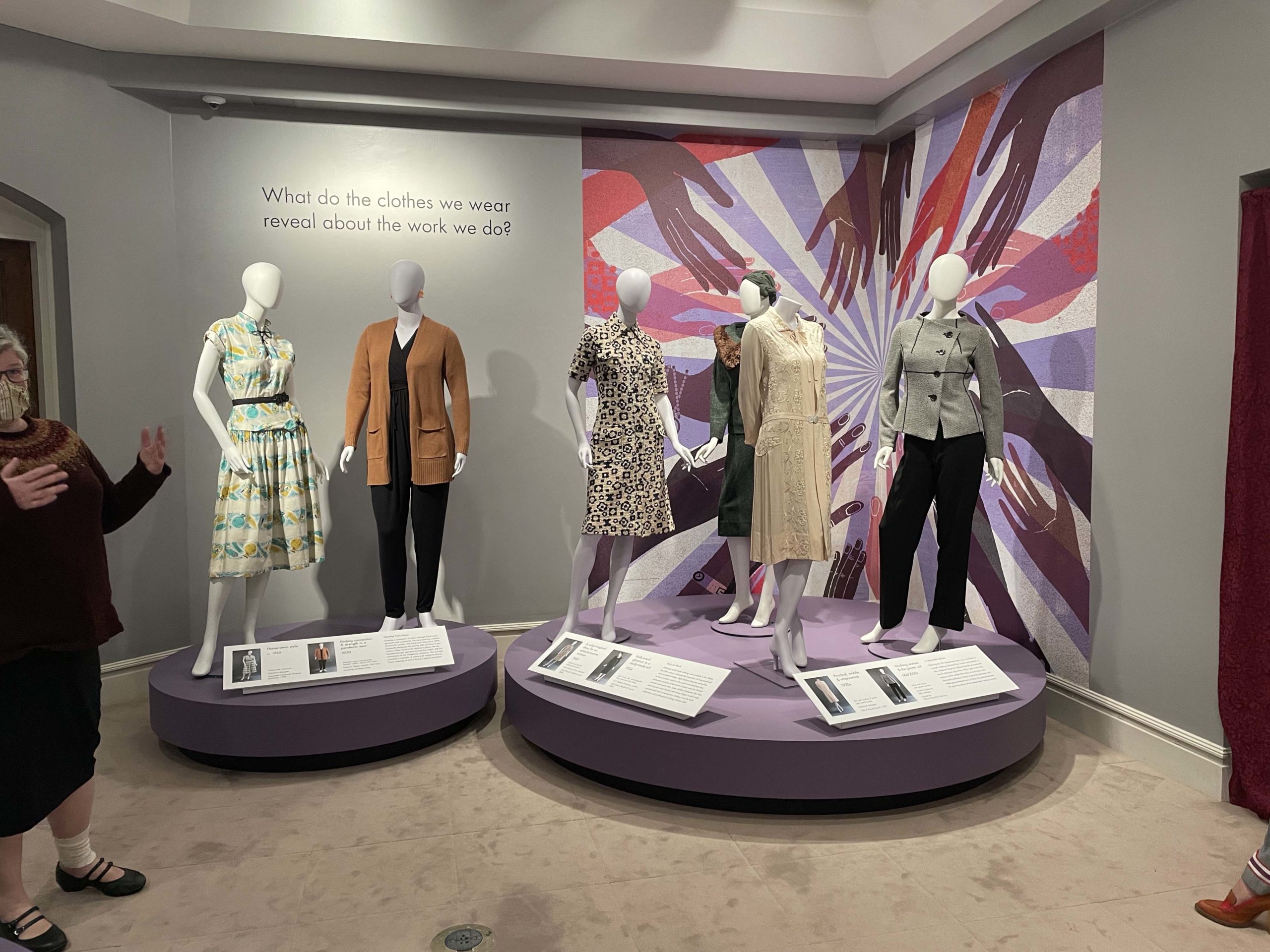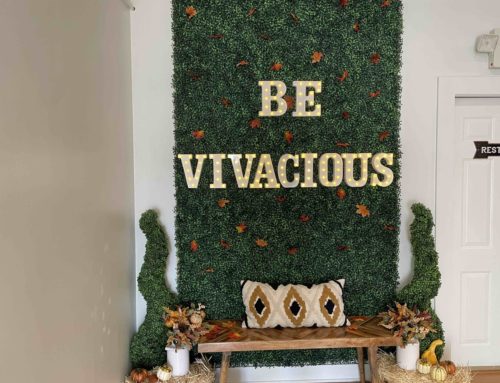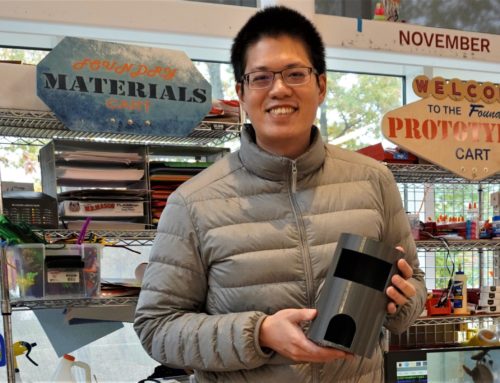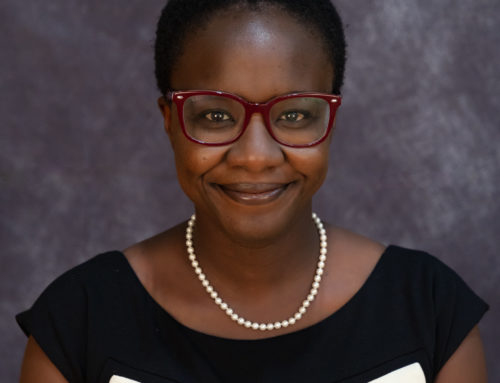The Worcester Historical Museum’s landmark exhibit, Pretty Powerful: 100 Years of Voting and Style, is open from October 26 through March of 2022 and is meant to commemorate the 100th anniversary of women’s right to vote through fashion and a look into women’s roles throughout the years.
Dr. Charlotte Haller, a professor of history at Worcester State University, guest curated the exhibit in the hopes of inviting visitors to imagine women’s lives throughout the last century and the stories that their clothes tell.
“The clothes we choose to wear are symbols of who we are and our personalities,” Haller said. “One of the things I encourage people to do as they come through the exhibit is think of all of the stories in one dress.”
Pretty Powerful shares stories of local activism, empowerment, diversity, inclusion, belonging, and change for women through 32 garments and additional accessories.
The exhibit was slated to open last October at the 100th anniversary of women’s voting rights, but due to Covid-19 that was delayed. The story, however, was broadened over the past year. Though the opening weekend of the exhibit is now the 171st anniversary of the first national woman’s rights convention that was held right in Worcester.
“Also knowing that a week and a half later that November 2 is voting day, I would love to say go vote and then come to this exhibit,” said Anne Sadick, Director of Development. “I can’t think of a better time to come to this exhibit.”
When visitors first enter the exhibit, they are welcomed with what the curator calls “three anchor dresses.” Each highlights a different theme of what is to be seen. One is an immigrant’s elegant creation for a Worcester matriarch. The dress, which is a deep purple and has delicate ruffles and seams throughout, gives the complexity of the outfit a new meaning when it is thought of in terms of the many women involved: the wearer, the maker, the servant who helped to dress the woman, and more.
“It reflects Worcester as an immigrant city,” Haller said. “It reflects class issues that we struggle with in this city as well.”
The middle dress of the three shows the activism side of the exhibit. The 1968 dress has the word “Nixon” printed on it in red block letters with blue stars in between each word. It is a paper dress and was meant to share a pop-art style and signify freshness and youthfulness, Haller siad.
“The 1960s were not just about counter forces and social justice movements,” Haller said. “It allows you to grapple with it in a way a documentary or newspaper couldn’t.”
Michelle Obama’s diplomatic dress that she wore in India in 2015 is also on display in the front. Haller said that she “really used fashion in a conscious way.” This dress was designed by Indian-American designer Bibhu Mohapatra.
Beyond the entrance, visitors can see a wide variety of different garbs. There are women dressed for work, like the woman who worked on the front lines of World War II and served as a “donut dollie” to drive a two-ton truck to bring donuts and cigarettes to troops in Europe. There’s also the connection to today’s world with the “Zoom woman” and an outfit consisting of a Target jumpsuit and Old Navy earrings. Though it still holds significance with the presence of cultural and traditional earrings to reflect Nipmuc ancestors even while working virtually.
“The more powerful or elite job that a woman has, the more their clothes look like men’s,” Haller said.
There are voting stories, like suffragettes. But it also must be recognized, Haller said, that while the woman wearing the outfit had the right to vote, her designer did not. Other stories come from a Vietnamese soldier’s jacket that has been repurposed with the words “When I die I’ll go to heaven because I spent my time in hell Pleiku” to add an activist side to the story.
“I think it really exemplifies how just an article of clothing can show culture, identity, style, and personality,” Haller said.
Yet Haller also wants to push the boundaries of what people think of clothing. For example, with three hijabs on display that add a voice and show the different significances of the head wraps.
“We have these assumptions about clothes but anyone can wear them,” she said. “It’s like the Vietnamese jacket. We’d think a soldier wore it, but anyone can wear these things. Anyone can bring new meaning.”
One new meaning the exhibit highlights is an outfit worn by a transgender woman. Haller spoke of how each piece signifies something for this woman and the importance of the clothing to her.
“For transgender women, putting on an outfit that really shows your feminity is an affirming and empowering event,” Haller said. “One of our goals for this exhibit was expanding who was included and what stories we told.”
Even more so, Haller said that the exhibit is able to show what happened in the past to get to where we are today and signify where we still must go. There is a white dress that was representative of the women’s revolution and the 19th amendment as well as a more recent pantsuit that State Senator Harriette Chandler wore as the second female president of the Massachusetts Senate, and the exhibit also includes a cashmere jacket that Vice President Kamala Harris wore.
“I look at this and I see the future and what the future can be,” Haller said. “We have more work to do. It’s meant to be reflective and powerful.”
Sadick holds the same sentiment and is hoping that’s the message people take away from the exhibit.
“Standing together we’re stronger,” Sadick said. “I think that in looking at the diversity of outfits, of wearers, of time periods, that all of these voices count. We want to capture more voices.”
The exhibit is made possible by the Museum’s team of Co-chairs Marlene Persky and Moira Moynihan, Honorary Chair Tay Ann Jay, and Advisor James Hogan. Sponsors include the National Endowment for the Humanities, the Fred Harris Daniels Foundation, Albert W. Rice Charitable Foundation, Rockwell Foundation, and Mass Cultural Council.
The exhibit is open to the public at 30 Elm Street in Worcester in the Booth Gallery Tuesdays through Saturdays from 10 a.m. to 4 p.m.







Leave A Comment